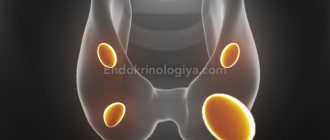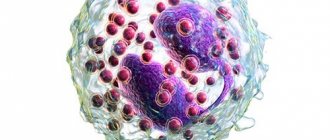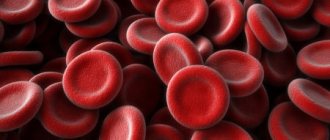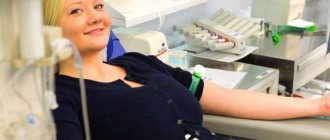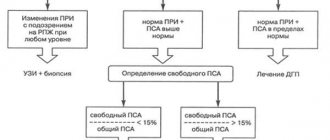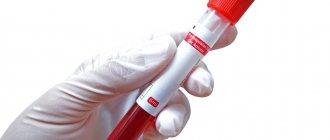- September 10, 2019
- Child's health
- Karina Perevalova
A general (or clinical) blood test is the most frequently prescribed laboratory test, during which it is possible to determine whether any pathological process is occurring in the body of a child or adult. In addition, it can be used to control the course of chronic ailments.
Clinical examination of liquid connective tissue is both a nonspecific and universal test. This is due to the fact that its results can be correctly interpreted only taking into account the patient’s symptoms.
Both infants and older children are faced with the need to regularly submit biological material for research. Below we describe how to correctly take a general blood test for a child, and what nuances need to be taken into account when preparing for the test. In addition, information is provided on how to correctly interpret the study results.
Indications
A clinical blood test is the most common type of laboratory diagnosis, based on the results of which conclusions can be drawn about the general condition of a person. In pediatrics, this test is especially important, because parents cannot always determine what really hurts their children.
Examination of just a few milliliters of liquid connective tissue can confirm or exclude the presence of a pathological process in the child’s body. Repeated analysis allows you to assess the degree of effectiveness of the treatment carried out earlier.
There are many conditions for which a clinical blood test is suspected to be particularly valuable. These include:
- Infectious pathologies of an inflammatory nature. They can have different etiologies (bacterial, viral, fungal) and localization. Most often, a general blood test is performed in children if they have symptoms of respiratory, skin and intestinal diseases, in particular helminthiasis.
- Inflammatory pathologies of non-infectious etiology. These include allergic and autoimmune diseases.
- Anemia.
- Blood loss resulting from injury.
- Impaired coagulation of liquid connective tissue.
- Pathologies of a malignant nature, which can be either congenital or acquired.
In addition, a general blood test is prescribed to assess the effectiveness of the treatment and before admission to educational institutions (kindergartens, schools).
Indications for a general blood test
Purpose of analysis
A general analysis is one of the first types of studies that are prescribed to a patient in whom the doctor suspects an infection. Based on the number of leukocytes, one can judge the penetration of the pathogen into the body, and based on the general clinical picture, the doctor will be able to make a diagnosis and prescribe treatment.
However, this is not the only reason; several more indications for a general blood test can be identified:
- Prevention of diseases. Some laboratory tests are included in mandatory annual medical examinations, as they make it possible to detect diseases in the early stages. These include anemia, bleeding disorders, leukemia and much more. Based on a general analysis, the doctor will be able to judge the condition of the body as a whole, and if pathology is suspected, he will refer the patient for further examination.
- Pregnancy. The purpose of the study is similar: during pregnancy, it is especially important to identify the presence of infections and other pathologies in the early stages in order to adjust the treatment plan and prevent harm to the child. When registering, a pregnant woman will undergo a medical examination, which will reduce the risks of abnormal development.
- A blood test will be prescribed for hepatitis, tuberculosis, syphilis and other terrible infections that can hide for a long time. When a patient does consult a doctor, it is important to assess his condition as objectively as possible in order to prescribe the correct treatment.
The test can be taken in both public and private clinics, and in many cases it is free of charge. Its cost, even in private institutions, is low, since it is one of the most common. You can get the results the very next day after the study.
Contraindications
If your child visits a massage therapist, it is necessary to complete the course or reschedule the date of collection of biological material. In addition, it is unacceptable to donate blood immediately after an X-ray examination, ultrasound or any physiotherapeutic procedures.
There are no absolute contraindications to the analysis. However, if a child suffers from certain diseases, in particular blood clotting disorders, low blood pressure, difficulties may arise during the collection of biomaterial. The nurse must be warned about this in advance.
Preparation rules
This stage is very important. Parents should be responsible for preparing for the study. If you do not take into account some nuances before collecting biomaterial, the interpretation of a general blood test in children may subsequently be carried out incorrectly. It is important to understand that liquid connective tissue reacts very sensitively to any changes.
Basic rules of preparation:
- Stop taking medications 14 days in advance. For example, if the child was treated for a completely different reason. If canceling the appointment is impossible, you must inform the doctor about this. The doctor will take this information into account when interpreting the results of the child’s general blood test.
- The day before and on the day of delivery of the biomaterial, it is necessary to avoid physical activity. It is recommended to take your baby for a walk before bedtime, and then put him to bed. For older children, you can read a book the day before, get a massage, or play calm games.
- If the blood sugar concentration is important to the doctor, you should not brush your child’s teeth in the morning. Older children should be prohibited from using chewing gum.
- After waking up, it is recommended to drink a glass of clean water without carbon. Information regarding whether to take a general blood test for a child on an empty stomach or not is presented below.
The psychological aspect plays a very important role. It is extremely important to prepare the child for the blood sampling process itself. If the child is older than 1 year, you can already try to explain to him that everything will go quickly and painlessly.
Clinical examination of liquid connective tissue is a highly sensitive indicator that allows you to detect even the slightest malfunction in the functioning of internal organs. At the same time, ignoring the need to comply with preparation rules can lead to false results.
Why take a general blood test?
CBC (complete blood test) is a simple and proven way to determine a person’s condition through his blood. This study is aimed at assessing the functioning of the main serum components, of which there are more than a hundred. A malfunction or change in the parameters of at least one shaped element of a biomaterial may indicate either a minor deviation in the body or serious pathologies in the progression stage.
Blood is donated for this study in the following cases:
- to identify microorganisms that are hostile and create an unfavorable environment;
- assess the state of the human immune system;
- determine the level of hormone concentrations in the blood;
- examination of all blood components to identify hidden or obvious health problems.
You do not have to be sick to undergo this type of examination. This analysis is mandatory for pregnant women, people undergoing a commission for employment, in the case of an annual routine examination. Often the CBC becomes the main test for people with chronic illnesses. This is the only way to constantly monitor their health status.
The first days of a newborn’s life are also accompanied by taking blood for a clinical analysis to assess the general condition of the baby and identify possible abnormalities at an early stage.
In any case, a referral for testing is issued by the attending physician. During hospitalization, the procedure for taking biomaterial will be carried out directly within the walls of the hospital.
Features of infant nutrition before biomaterial collection
Many parents are concerned about the question of whether to take a general blood test for their child on an empty stomach or not. Doctors say that at the time the biomaterial is taken, the baby’s stomach should be empty.
As a rule, laboratories are open from early morning until 10-11 o’clock. In fact, this gap is quite enough to plan a visit to a medical facility.
As a rule, immediately after waking up, infants feel hungry. If a child wants to eat, there is no need to deny him this and quickly take him to the laboratory. In this case, the baby will experience enormous stress, and the doctor may receive unreliable test results.
If a child is under 1 year old, it is useless to explain to him why he was not fed before a procedure that was scary for him. Breakfast for infants is required. Porridge, milk, lean meat, vegetables - any dish from his usual diet can be offered to the baby. Then you need to take a three-hour break.
Doctors recommend that parents adhere to the following algorithm:
- Wake up your baby early.
- Feed him. Before a general blood test, the child can eat any food that is familiar to him.
- Go for a walk with your child or play at home.
- After 3 hours, go to the laboratory and submit the biomaterial for research.
Thus, before a general blood test, the child can eat. But after finishing the meal, you must wait 3 hours and only then go to the laboratory.
You can drink clean water in moderate portions. All liquids containing sugar, dyes and preservatives are prohibited. It is unacceptable to drink tea, fruit drinks, compotes and decoctions.
How to properly prepare for a laboratory test
13228 10 October
IMPORTANT!
The information in this section cannot be used for self-diagnosis and self-treatment.
In case of pain or other exacerbation of the disease, diagnostic tests should be prescribed only by the attending physician. To make a diagnosis and properly prescribe treatment, you should contact your doctor. See also other conditions for preparation for analysis.
Dear patients! Please note that it is recommended to donate blood for laboratory tests in the morning on an empty stomach, after an 8-12 hour overnight fasting period. If the patient is unable to come to the laboratory in the morning, blood should be donated after 6 hours of fasting, eliminating fats in the morning meal.
Timely and accurate diagnosis of various diseases is impossible without laboratory tests. There are no manifestations of the disease yet, but blood counts are already “signaling”: “Attention! Anxiety!". According to the World Health Organization (WHO), laboratory tests provide 60–80% of diagnostic information about a patient. Of course, a diagnosis is not made based on just one laboratory analysis; it is compared with the clinical picture, with data from other studies and observations. Laboratory analysis suggests the direction for further search. Therefore, regular preventive examinations are the key to timely initiation of treatment, and proper preparation for tests in a modern laboratory is an accurate diagnosis.
Laboratory doctors of the INVITRO Independent Laboratory have prepared a number of recommendations, compliance with which will allow you to obtain the most accurate results.
- How to prepare for blood tests
- How to prepare for a urine test
- Rules for collecting stool for dysbacteriosis
Preparing the patient for the blood donation procedure
- A number of tests are done on an empty stomach. For example, biochemical (glucose, cholesterol, bilirubin, etc.) and serological tests (syphilis, hepatitis B), hormones (TSH, parathyroid hormone), etc. “Fasting” is when at least 8 hours pass between the last meal and taking blood (preferably at least 12 hours). Juice, tea, coffee, especially with sugar, are also food, so you will have to be patient. You can drink water.
- Strictly on an empty stomach (after a 12-hour fast) you should donate blood to determine lipid profile parameters: cholesterol, HDL, LDL, triglycerides.
- If you have to take a general blood test, your last meal should be no later than 1 hour before donating blood. Breakfast may consist of unsweetened tea, unsweetened porridge without butter and milk, and an apple.
- It is advisable to exclude fatty, fried and alcohol from the diet 1 - 2 days before the examination. If there was a feast the day before, reschedule the laboratory test for 1-2 days. Avoid smoking an hour before blood collection.
- The content of many blood tests is subject to daily fluctuations, so for some studies blood should be taken strictly at a certain time of day. So, blood tests for some hormones (TSH and parathyroid hormone), as well as for iron, are given only before 10 am.
- When donating venous blood, it is necessary to exclude factors that influence the research results: physical stress (running, climbing stairs), emotional arousal. Therefore, before the procedure you should rest for 10-15 minutes in the waiting room and calm down.
- It happens that the doctor ordered a test, but for various reasons it is difficult for the patient to come to the medical office (illness, pregnancy, lack of time, etc.) In this case, it is enough to call the INVITRO Laboratory Emergency Service by calling tel. , and our procedural team will arrive at a place and time convenient for you.
- Blood is taken for analysis before starting to take medications (for example, antibacterial and chemotherapy) or no earlier than 10 to 14 days after their discontinuation. The exception is when they want to study the concentration of drugs in the blood (for example, valproic acid, anticonvulsants). If you are taking medications, be sure to tell your doctor about this.
- Blood should not be donated after X-rays, rectal examinations, or physical therapy procedures.
- During hormonal studies in women of reproductive age (from approximately 12 to 13 years of age and before the onset of menopause), the results are influenced by physiological factors associated with the stage of the menstrual cycle. Therefore, when preparing for examination for the hormones FSH, LH, prolactin, estriol, estradiol, progesterone, the phase of the cycle should be indicated. When conducting a test for sex hormones, strictly adhere to the recommendations of your doctor about the day of the menstrual cycle on which you need to donate blood.
- When performing tests for the presence of infections, it should be taken into account that depending on the period of infection and the state of the immune system, any patient may have a negative result. But, nevertheless, a negative result does not completely exclude infection. In doubtful cases, re-analysis is recommended.
- Different laboratories may use different research methods and units of measurement. To ensure that the assessment of your results is correct and the results are acceptable, do the tests in the same laboratory, at the same time. Comparison of such studies will be more correct.
Preparing the patient for the urine donation procedure Collecting urine for general analysis in a container with a preservative
- From the medical laboratory office, obtain a container with a white cap and a test tube with an adapter.
- On the eve of the test, it is recommended not to eat vegetables and fruits that can change the color of urine (beets, carrots, etc.), and not to take diuretics. Before collecting urine, it is necessary to perform a thorough hygienic toilet of the genitals. Women are not recommended to take a urine test during menstruation.
- Collect approximately 50 ml of morning urine in a container (with a white lid). To properly conduct the study, during the first morning urination, release a small amount of urine (the first 1 - 2 seconds) into the toilet, and then, without interrupting urination, place a urine collection container into which to collect approximately 50 ml of urine.
- Immediately after collecting urine, close the container tightly with a screw cap.
- Insert the adapter into the container, pressing its sharp end into the recess on the container (Fig. No. 1).
- Place the test tube downwards with the rubber stopper into the recess on the wide part of the adapter, and the test tube will begin to fill with urine. After urine stops flowing into the test tube, remove the test tube from the adapter (Fig. No. 2, No. 3).
- Invert the tube several times to better mix the urine with the preservative (Fig. No. 4).
- Deliver the test tube with urine to the laboratory during the day (according to the blood test schedule). If it is not possible to immediately deliver urine to the medical office of the laboratory, then the test tube with urine should be stored at a temperature of +2...+8°C.
Collection of 24-hour urine for biochemical analysis
24-hour urine is collected. The first portion of urine in the morning is removed. All subsequent portions of urine excreted during the day, night and the morning portion of the next day are collected in one container, which is stored in the refrigerator (+4...+8°C) during the entire collection time (this is a necessary condition, since at room temperature it is significantly glucose levels decrease). After completing urine collection, accurately measure the contents of the container, be sure to mix it and immediately pour it into a small jar (no more than 5 ml). Bring this jar to the laboratory for testing. You don't need to bring all the urine. On the referral form you need to indicate the daily volume of urine (diuresis) in milliliters, for example: “Diuresis 1250 ml”, also write down the patient’s height and weight.
Before 10 am (1st or 2nd morning urine sample), a urine sample is taken to determine DPID.
Collection of urine for the analysis “Catecholamines in urine”
To conduct the study, you must obtain preservative powder and a urine container from any INVITRO medical office. Before routine urine collection to determine catecholamines, for 3 days you should not use drugs containing rauwolfia, theophylline, nitroglycerin, caffeine, ethanol, if possible, do not take other medications, as well as food products containing serotonin (chocolate, cheeses and other dairy products , bananas), do not drink alcohol. Avoid physical activity, stress, smoking, pain, which causes a physiological rise in catecholamines. First, a preservative powder from a test tube obtained in the laboratory is poured into the bottom of a clean container into which urine will be collected. The bladder is emptied (this portion is poured out), the time is noted and urine is collected in a container with a preservative exactly for 24 hours; the last urination into the container should be 24 hours from the time recorded (for example, from 8.00 am to 8.00 am the next day). It is possible to collect urine over 12, 6, 3 hours or a single portion, preferably during the daytime. At the end of the collection period, measure the total volume of urine excreted per day, mix it, pour some into a specially issued container and immediately bring it for examination. When submitting material, be sure to note the time of collection and the total volume of urine.
Remember that only the attending physician, who has the opportunity to observe the patient’s condition and explain the need to prescribe certain tests, can draw up an optimal laboratory examination program and evaluate the test results.
IMPORTANT!
The information in this section cannot be used for self-diagnosis and self-treatment. In case of pain or other exacerbation of the disease, diagnostic tests should be prescribed only by the attending physician. To make a diagnosis and properly prescribe treatment, you should contact your doctor.
Nutritional features of children over 1 year old
In this case, the child will have to undergo a general blood test on an empty stomach. This rule is unbreakable. It applies to children over 1 year of age and adults. The fact is that the doctor needs to obtain indicators that reflect the actual functioning of the internal organs.
Eating any food before collecting biomaterial will affect the results of the analysis. Due to this, the doctor may interpret them incorrectly. The worst thing is that, due to parental negligence, the doctor may make an incorrect diagnosis and prescribe an inappropriate treatment regimen.
For example, a child had breakfast in the morning and went to the laboratory. About an hour later he donated blood. At this time, food components have already entered the liquid connective tissue and provoked changes in its composition. They affected blood viscosity, the ratio of proteins, fats and carbohydrates, and the leukocyte formula. After the study is completed, the conclusion form will be sent to the attending physician. The doctor will see certain signs and conclude that an inflammatory process is occurring in the child’s body. Then the doctor will prescribe treatment. Therapy can pose a danger not only to health, but also to life. That is why it is extremely important for parents to know how to properly take a general blood test for a child and follow all established preparation rules.
Reasons for incorrect results
A patient can go to the laboratory and take a clinical blood test while in good health and well-being, but when he learns the result of the test, he discovers that some indicators are noticeably different from the norm. What is this connected with? There are several reasons:
- foods with a high fat content disrupt the erythrocyte sedimentation rate, causing ESR values to change;
- Alcohol has a similar effect on the body;
- due to changes in hormone levels that occur after overwork or stress, it becomes difficult to count blood cells;
- temporary leukemia takes the indicators beyond the normal range for a week; it is formed due to interventions such as tooth extraction or gastroscopy;
- previous illness;
- if platelet counts are important, then the test should be taken on an empty stomach;
- When conducting a glucose test, it is also important to take tests while hungry.
There are situations when, due to some chronic diseases, a person needs to have breakfast to maintain good health. In this case, it is allowed to make a light snack - a low-calorie dish without sugar.
Attention! When it comes to how to take a clinical blood test on an empty stomach or not, it is important to understand the essence of the word “fasting”. This concept means the intake of any food into the body no earlier than 8-12 hours before the start of the study.
Process of collecting biomaterial
Many mothers and fathers do not know where they get a general blood test from children. Both capillary and venous blood are suitable for the study. These species have different normal values, which must be taken into account when interpreting the results.
Where do they get a general blood test for children? Most often, by default, biomaterial is collected from a finger. But, according to clinical recommendations, if it is impossible to perform this action, the nurse has the right to make a puncture in the vein. It is worth noting that this happens extremely rarely.
Blood sampling for clinical research occurs as follows:
- The nurse wipes the pad of the finger of the non-working hand with cotton wool, generously moistened with an antiseptic. The latter most often is medical alcohol.
- The nurse then very quickly pierces the skin with a lancet or scarifier. Then she puts a little pressure on the pad of her finger so that a few drops of blood come out. This liquid connective tissue is removed with cotton wool soaked in an antiseptic.
- The nurse then collects the escaping blood and transfers it to a tube. Then cotton wool moistened with an antiseptic is applied to the puncture site. It needs to be held on the pad for several minutes. This is necessary in order to stop the bleeding.
The process of collecting biomaterial lasts on average 1 minute. It is necessary to explain to the child that it is not associated with the occurrence of severe painful sensations, but some discomfort may still occur.
Information on how to take a general blood test for a child can be provided by the doctor who ordered the test. He will subsequently be involved in the interpretation of the results.
From a vein or from a finger
Preparing for this type of analysis is not difficult. To do this, you need to come to the laboratory with a feeling of hunger and wait for your turn. Under sterile conditions, a laboratory technician will make a puncture on the tip of the finger and, using a device, pour it into test tubes. This procedure takes about 5 minutes. In modern clinics, special devices are used to collect blood, which makes the procedure virtually painless.
In some cases, this analysis alone is not enough. To study the clinic in detail, the patient needs to additionally donate blood from a vein. But, in this case, the patient is faced with a similar question about whether blood is taken from a vein on an empty stomach or not. In fact, food or liquid immediately after the stomach enters the circulatory system. It causes unreliable laboratory results. Accordingly, the study should be carried out on an empty stomach.
Normal indicators
During the diagnosis, the laboratory technician takes into account the total volume of blood, counts the number of formed elements, and also evaluates their relationship with plasma and with each other. That is why decoding the result is difficult for people without medical education. Doctors do not recommend considering your own conclusions to be 100% correct and independently prescribing treatment for your child. This can lead to irreparable consequences.
The age of the child must be taken into account. The fact is that as children grow older, the norms for the results of a general blood test in children also change. Information about what indicators are normal for each age is presented in the table below.
If the child is completely healthy, all of these indicators will be within normal limits. If a pathological process occurs in his body, they will be deviated in one direction or another. It does not happen that only one indicator decreases or increases. That is why a comprehensive assessment of laboratory diagnostic results is important. Only a doctor can do this correctly.
External factors
Even if quality preparation has been done in terms of nutrition or the absence of negative habits, it is important to understand that external factors can also influence the results. To obtain reliable results, it is recommended to refuse:
- intense physical activity;
- stress.
Both of these factors are due to the release of certain hormones into the human bloodstream. They seriously affect the indicators that are considered the most important. Therefore, before directly entering the room where the procedure is being carried out, you need to sit in a calm environment for 15 minutes.
Excluded the day before the test, there should also be diagnostic class methods that involve an invasive course. Dental surgeries can also change leukocyte counts. For better results, it is worth eliminating such procedures a week before the expected delivery.
The reagents used to prepare the analysis can also affect the results. The point is that it is impossible to compare the results obtained from two different laboratories; they may be different. Typically, test results include normal values. If a control test is required, it must be performed in the same laboratory with the same reagents.
The indicator may also depend on how long the blood test is done and how long it takes for the collected samples to be ready for use. Sometimes long-term storage has a negative effect. This can often be observed during transportation from one laboratory to another. Due to the action of preservatives, cells are destroyed.
What diseases are indicated by deviations from the norm?
It is worth noting that this does not always happen due to a pathological process. Sometimes the reasons are natural. Or parents forgot how to take a general blood test for their child, and, for example, fed him immediately before visiting the laboratory. Both pathological and physiological causes are described below.
One of the most important indicators is hemoglobin. This substance is an iron-containing protein found in red blood cells. When its concentration in the blood decreases, it is customary to talk about anemia. This is a pathological process characterized by a deficiency of oxygen molecules in the body, as a result of which the functioning of all systems is disrupted.
Reasons for decreased hemoglobin levels:
- Unbalanced diet. Anemia is often diagnosed in children who do not receive proper complementary foods.
- Pathologies of the digestive organs.
- Infectious diseases.
- Helminthic infestations.
- Incompatibility of the blood of the fetus and mother during pregnancy.
- The process of destruction of red blood cells occurs in the body.
- Impaired hemoglobin production.
- Insufficient bone marrow development.
- Congenital pathologies of organs with hematopoietic function.
An increase in hemoglobin levels is diagnosed extremely rarely. The main reasons for this condition:
- Pathologies of the cardiovascular system.
- Impaired kidney function.
- Diseases of liquid connective tissue.
- Pulmonary fibrosis.
- Oncological diseases.
- Pulmonary heart.
- Presence of extensive burns.
- Being in a stressful state (more often detected in schoolchildren).
- Smoking in adolescence.
Red blood cells are the most important formed elements of the basic biological material of humans. Their main purpose is to deliver oxygen molecules to every cell of the body.
When the level of red blood cells increases, it is customary to talk about a condition such as erythrocytosis. The main reasons for its occurrence:
- Congenital heart pathologies.
- Disruption of the hematopoietic system.
- Heart failure.
- Impaired functioning of the adrenal cortex.
- Pathologies of the respiratory system (for example, chronic obstructive pulmonary disease, asthma, bronchitis, etc.).
- Oncological diseases.
- Diabetes.
- Hypertension.
- Any pathology, the course of which is accompanied by vomiting, diarrhea and fever.
- Itsenko-Cushing's disease.
- Splenectomy.
- Extensive burns.
In the presence of erythrocytosis, hemoglobin is always elevated.
If the concentration of red blood cells is reduced, doctors diagnose erythropenia. The causes of this condition may be:
- Bleeding, including chronic bleeding.
- Deficiency of folic acid, iron or vitamins.
- Chronic kidney failure.
- Severe intoxication of the body.
- Radiation or chemotherapy.
- Lymphoma.
- Leukemia.
- Glomerulonephritis.
- Myelodysplastic syndrome.
- Autoimmune pathologies.
- Presence of a tumor in the bone marrow.
- Aplastic type anemia.
- Regular consumption of contaminated water.
- Being under stress.
- Overwork (both mental and physical).
- Hunger.
- Uncontrolled use of medications.
It is worth noting that against the background of erythropenia, the level of hemoglobin always decreases.
The color index is a specific feature. It can be used to judge the ratio of red blood cells and hemoglobin.
If the color index is reduced, this may indicate the following ailments:
- Pathologies of the hematopoietic system.
- Kidney failure.
- Hemoglobinopathies.
- Intoxication of the body with lead or chemicals.
- Anemia.
If there is an increase, the doctor may suspect one of the following pathologies:
- Chronic hypoxia.
- Oncology.
- Diabetes.
- Diseases of the endocrine system.
- Liver damage.
- Anemia.
- Pathologies of the heart or lungs.
Reticulocytes are platelets, but only immature ones. Their number allows you to find out at what speed the composition of liquid connective tissue is renewed.
If reticulocytes are elevated, this may indicate the presence of internal hemorrhage, anemia, malignant damage to the hematopoietic system, hypoxia, inflammatory processes, and infectious diseases. In addition, this condition is often a consequence of an overdose of antipyretics. That is why it is always important to remember how to take a general blood test for children. It is not advisable to take medications before collecting biomaterial.
The concentration of reticulocytes can be reduced due to anemia, thyroid dysfunction, kidney disease, uremia, and infectious processes. In this case, most often there is a significant deviation from the norm. It is better to entrust the interpretation of a child’s general blood test to a doctor. Only a specialist will be able to find out the reason for the deviation.
Platelets are plates that are responsible for the process of coagulation and the formation of blood clots. Normally, a general blood test in children should contain at least 160 (180 in children). If they are deficient, the doctor may suspect a malfunction of the coagulation system, which often occurs with hemophilia and other hereditary pathologies. In addition, platelet deficiency can occur due to anemia, infectious diseases and oncology.
If platelets are much higher than normal, this may indicate the presence of a chronic inflammatory disease (an example is tuberculosis). In addition, the following conditions may cause thrombocytosis:
- Enhanced synthesis of these elements by megakaryocytes located in the red bone marrow. Most often this happens with erythremia.
- The process of platelet utilization is very slow. This may be a consequence of surgical excision of the spleen.
- Platelets are not distributed correctly in the bloodstream. As a rule, this condition is a consequence of mental or physical stress.
It is worth noting that the doctor only suspects the presence of a dangerous pathology if the platelet concentration exceeds 800 thousand/l.
One of the most clinically significant indicators is ESR. If an inflammatory process occurs in the body, red blood cells become heavier and their sedimentation rate increases.
Leukocytes are the main weapon of the body's defense system. Their deviation from the norm in a general blood test in children in 95% of cases indicates the presence of an infection in the body or a dysfunction of hematopoiesis. They have many types: basophils, eosinophils, neutrophils, lymphocytes, monocytes.
How is a general blood test deciphered?
Interpretation of general blood test indicators
A general blood test is carried out in several stages, at each of which certain indicators will be checked. Based on the results of each stage, it will be possible to draw a conclusion about the presence of a particular disease.
The main indicators that are most important:
- RBS - this parameter indicates the number of red blood cells. Their main function is to transport oxygen bound to hemoglobin. If there are not enough of them, this indicates the occurrence of anemia and oxygen starvation, and if there are too many of them, this indicates an increased risk of thrombosis - blockage of blood vessels.
- HGB is an indicator indicating hemoglobin. Excess hemoglobin can be caused by dehydration, so any deviation from the norm is an alarming sign.
- PLT, MPV, PDW – a group of indicators indicating the number of platelets present in the blood, their size and distribution width. Platelets are responsible for blood clotting, and if there are insufficient numbers of them, even a small wound can lead to significant bleeding. Platelets can be destroyed due to congenital diseases (hemophilia), as well as liver damage that occurs for various reasons.
- WBC is an indicator of the number of leukocytes. White blood cells are part of the body's immune system that helps fight various diseases. If the number of white blood cells is increased, this indicates an infection present in the body. If their number is reduced, this may indicate damage to the immune system, which may leave the body defenseless. A strong change in the number of leukocytes is evidence of blood cancer, which is also called leukemia.
- LYM is an indicator of the level of lymphocytes. These blood cells are also involved in immune defense responses and help fight off pathogens. The normal figure is 25-40%.
- MID group. This is an indicator of the presence of monocytes and other blood cells, presented in limited quantities. They play several important roles, including increasing the activity of the immune system and also resisting allergic reactions.
- ESR is an indicator that also indicates the rate of blood clotting. It depends on the age of the patient: for adults and children, the indicators will vary significantly.
Based on these indicators, the doctor will draw conclusions about the presence of the disease.
A general blood test is considered one of the simplest, but at the same time it is also one of the most effective, since the doctor will be able to create a complete picture based on a number of indicators.
Only a specialist can correctly interpret the information, so you should not engage in self-diagnosis. Even if you know the basic normal indicators, on Internet sites they are indicated without taking into account age, gender, and individual characteristics of the body. All this will not allow you to accurately understand the picture and determine the presence of the disease in yourself. In addition, the doctor relies not only on the test result, but also on a number of additional symptoms and signs.
Where to get a general blood test for a child, cost
A clinical study of liquid connective tissue is an analysis for which biological material can be submitted in any laboratory. Moreover, the results will be ready almost immediately.
You may want to contact your primary care physician first. He will issue the directions. In addition, he will tell you how to properly take a general blood test for a child. After this, you need to go to the treatment room and sign up for biomaterial collection. On the appointed day and time you need to come and donate blood for analysis.
In this case, the research will be free. You just need to present your medical insurance policy to the registrar.
You can take a general blood test for your child for a fee. In this case, you must choose any medical institution and come to the treatment room during its opening hours. Moreover, you don't even need a referral. This option is more attractive because it saves a lot of time. Moreover, the cost of the study is on average only 350 rubles.
What is a general blood test?
Characteristics of general blood test
One of the most common types of tests is a general blood test. it allows you to count the number of blood cells of all types, as well as determine their parameters. In addition, it allows you to count the amount of hemoglobin in the blood, determine the leukocyte formula, and check whether the ratio of plasma and blood cells is normal. Based on these indicators, one can conclude that there are a number of pathological processes in the body and take appropriate measures.
A general blood test is performed in the morning on an empty stomach. For this purpose, capillary blood is taken from the ring finger; everyone is familiar with this procedure from childhood. The released drops are collected with a pipette and transferred to a test tube, from where the blood will then be taken for testing. In some cases, for a general analysis, blood is taken from a vein, in which case it is also checked for the erythrocyte sedimentation rate.
Rules for taking a general blood test
It is important to know how to correctly take a general blood test so that the result does not turn out to be blurry and gives the doctor the most useful information.
All patients should follow a few basic guidelines:
- Blood is taken only on an empty stomach: the last meal should be no later than 8-12 hours before the test. Before the analysis, you can only drink water; coffee, tea, juices and other drinks are not allowed.
- To prevent distortion of the picture, 1-2 days before the analysis it is undesirable to take spicy and fatty foods, and even more so alcoholic beverages. At this time, it is better to give up smoking, as this bad habit affects the hemoglobin content in the blood.
- Strong physical activity is highly undesirable before taking the test, which is why it is most often carried out in the morning.
- The day before, physiotherapeutic procedures, visiting the bathhouse and other influences that have a strong effect on the body are not recommended. If you are taking any medications, be sure to tell your doctor, who will use the data obtained during testing.
- It is not advisable to combine a general blood test with other types of examination. This is especially true for ultrasound and x-ray examinations.
Useful information about general blood tests.
These recommendations must be followed: any violation may lead to an increase in the number of certain blood cells in the blood, and this may show an incorrect picture. The doctor prescribes treatment based on the data obtained, and if the patient is irresponsible about taking tests, he may end up seriously harming himself.
Read: How to take a blood test for hemoglobin: preparation and procedure
